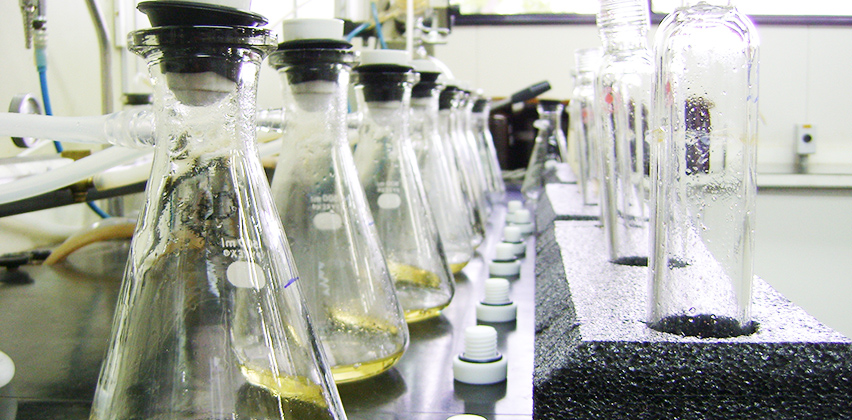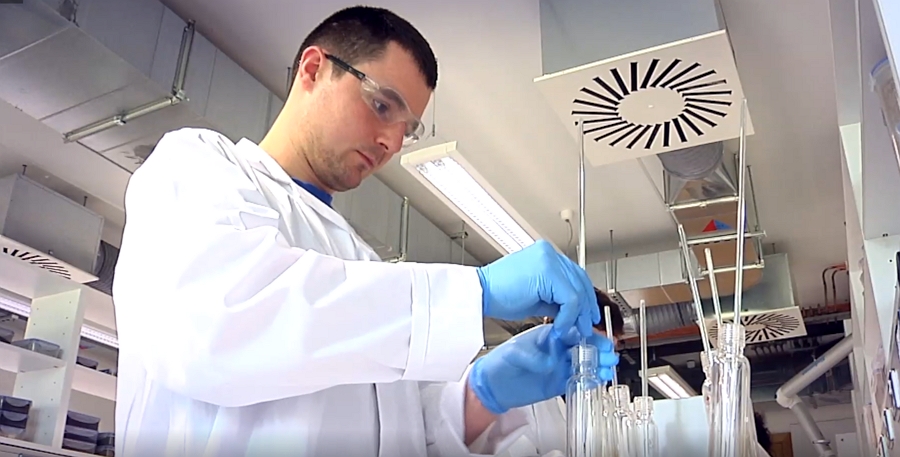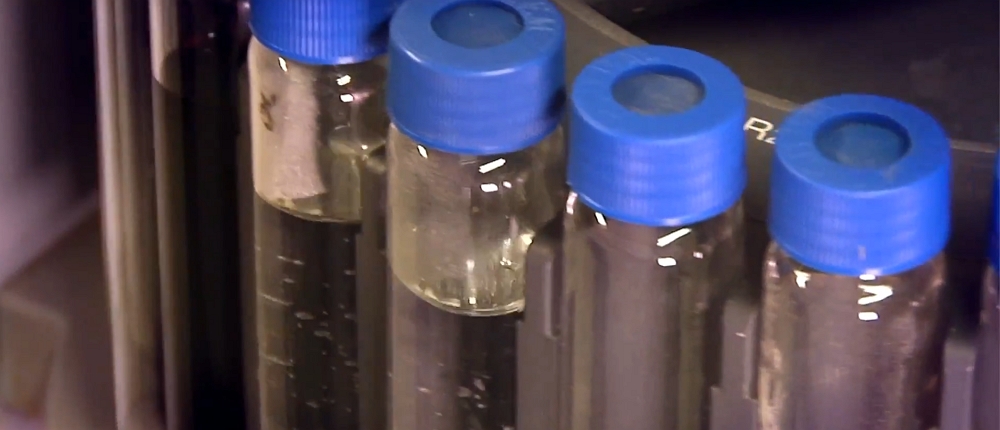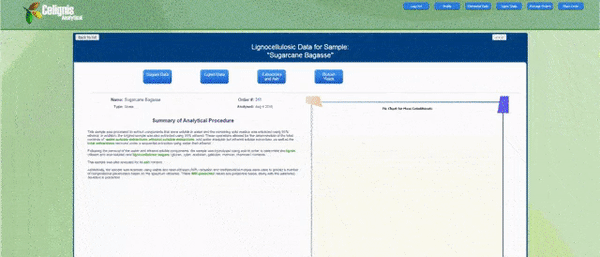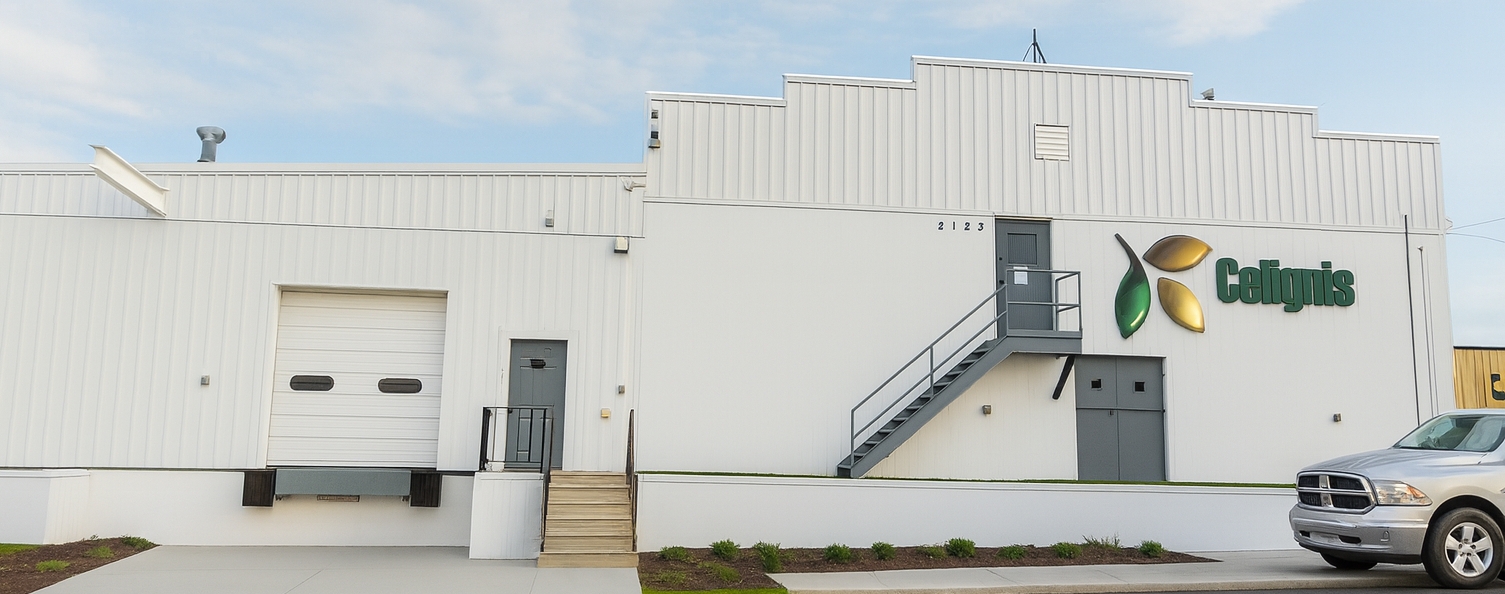Services for the Analysis of Process and Pre-treatment Liquids
We also have dedicated analysis packages to determine the composition of the bio-oil liquid output from pyrolysis, please click here for more detail on bio-oil analysis.
Analysis of Liquids from Pre-treatment Processes
For example, many pre-treatment processes focus on the hydrolysis of hemicellulose from biomass and on the subsequent valorisation of these liberated sugars. Whilst analysis of the solid residue from pre-treatment would tell us the amount of hemicellulose removed from the sample it would not tell us the fate of this constituent in the liquid. Given that hemicellulose contributes a significant proportion towards the total mass of many biomass feedstocks, it is of major commercial importance that it is valorised as efficiently as possible.
- As free monsaccharides - (e.g. xylose, mannose etc.) in solution.
- As oligosaccharides - i.e. in solution but not fully hydrolysed and instead
present in short chains of sugars, known as oligosaccharides.
- As sugar degradation products - the pre-treatment conditions may have further-degraded the sugars to products such
as levulinic acid, furfural and formic acid.
Analysis of Liquids from Hydrolysis Processes
Conversely, some hydrolysis technologies may target the production of these sugar degradation products in high yields as several, such as levulinic acid, furfural, and hydroxymethylfurfural, are of high value.
Analysis of Liquid Extracts from Biomass
Analysis of Process Liquids at Celignis
We have a number of analysis packages that allow for detailed characterisation of the liquid outputs from biomass conversion
processes.
Sugars in Solution
Sugars and Oligosaccharides in Solution
Firstly, the liquid is analysed using our ion chromatography system for the free monosaccharides and disaccharides in solution, just as in package P21 - Sugars in Solution.
Then we subject the liquid to a mild form of acid hydrolysis involving 4% sulphuric acid and 1 hour in an autoclave at 121 degrees Celcius. These conditions will break apart any oligosaccharides into their constituent monosaccharide units.
The liquid is subsequently filtered and analysed again on our IC system, to determine the amounts of various monosaccharides, after correction for any losses in sugars associated with the hydrolysis process. For each monosaccharide there will now be two values, the concentration prior to hydrolysis and that after hydrolysis.
With the exception of fructose (which degrades to hydroxymethylfurfural during the autoclaving step) all monosaccharides should be present in greater concentration post-hydrolysis. Hence, the proportion of each sugar that is present in the original liquid in the oligomeric form can be calculated by subtracting the pre-hydrolysis concentration from the post-hydrolysis concentration. As we report the sucrose and cellobiose contents separately we correct the calculated oligomeric glucan content using those data.
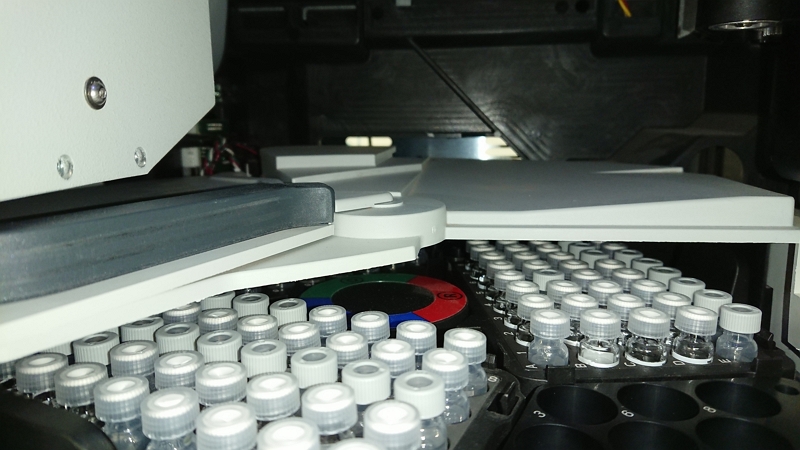
Sugar Degradation Products
This analysis package also involves the use of our ion chromatography system but involves a different column and detector from those used for carbohydrate analysis. Package P22 is detailed below and you can click here to read more about sugar degradation products.
Our Recommendations for Evaluating Pre-Treatment Processes
(1) The Starting Feedstock
We would also recommend analysis package P12 - Sugars in Solvent Extract as this will report the amount of water-soluble carbohydrates in the sample. It is likely that water-soluble carbohydrates will be present in the liquid output of many pre-treatment processes and, if their concentrations are not known, it may be incorrectly inferred that such sugars present in the liquid must come from lignocellulose. However, if the water-soluble carbohydrate composition is known then these values can be subtracted from the amounts of sugars in the pre-treatment liquid to determine the amount of true lignocellulosic sugars that are present.
Similarly, if you expect that there will be some starch in your sample then we also recommend that analysis package P14 - Starch Content is also undertaken as starch may also be removed and hydrolysed in many pre-treatment processes.
Additionally, if you are interested in the uronic acid composition of the biomass then we recommend analysis package P15 - Uronic Acids is also undertaken.
(2) The Liquid Product from Pre-treatment
(3) The Solid Residue from Pre-treatment
While it is likely that most of the conventional biomass extractives will have been removed in the pre-treatment, it is still necessary in many cases to undertake extractives removal of the solid residue from pre-treatment prior to undertaking its lignocellulosic analysis. This is because this residue may contain some of the liquid fraction sorbed onto its particles. The sugars and sugar-degradation products will be retained and concentrated on these particles if the sample is dried and may still be retained even if the sample is washed. Hence, if they are not removed prior to hydrolysis, these sugars may be assumed to come from lignocellulose, giving a false impression of the efficiency of the pre-treatment.It is also possible that the composition of these sorbed water-soluble constituents will be different from that of the liquid fraction, so we recommend that the water extract is also characterised for its own monomeric/oligomeric sugar composition. These results, coupled with the data from the previous analyses, will help to give a clear and detailed picture on the fate of cellulose, hemicellulose, and lignin during the pretreatment process. We would also recommend that the ash content is determined to see how much ash is solubilised by the pre-treatment.
Economic production of fermentable sugars from lignocellulosic biomass is critical for the biorefinery applications in the bioeconomy industry. This study demonstrates effective enzymatic hydrolysis of recalcitrant softwood using newly identified fungus Penicillium rotoruae. Initially, nineteen fungal isolates were screened on softwood galactoglucomannan (GGM), with nine showing strong responses in the liquid culture. Trichoderma viride, Penicillium rotoruae, and Amorphotheca resinae showed highest B-mannanase, B-mannosidase, and a-galactosidase activities. P. rotoruae demonstrated superior main chain cleaving enzyme activities, while A. resinae excelled in the side chain cleaving activity. The crude enzyme of P. rotoruae was evaluated on two Pinus radiata substrates. Using soluble GGM, P. rotoruae released 34.3% monomeric sugars (32.1 g/L reducing sugars), outperforming commercial CTec-2 (22.9% and 23.2 g/L respectively). Co-application of CTec-2 with P. rotoruae enzymes increased monomeric sugar yield to 56.3%, with galactose, mannose, and glucose increasing 20-, 3.6-, and 2.2-fold respectively. Using insoluble pulp, co-application yielded 88% of monomeric sugars (20.2 g/L reducing sugars) representing an increase of 20% soluble sugars relative to CTec-2 used alone. Techno-economic analysis indicated an increase in annual EBITDA, a positive ROCE and sugar cost savings of NZD 125/t demonstrating significant economic potential for softwood biorefineries. | |
A novel thermo-mechanical pulping (TMP) process has been developed to produce a by-product rich in high-molecular weight (MW) hemicelluloses, a potential raw material for barrier coatings and films. This process uses prehydrolysis to solubilise the hemicelluloses followed by chip compression to separate the soluble material from the wood matrix. The pressate from the chip compression stage was dark-coloured and had a high content of high-MW hemicelluloses and lignin. However, isolating the high-MW material from the pressate directly by ultrafiltration was not feasible because of membrane fouling by dissolved lignin and wood extractives, while coloured impurities are undesirable for many potential applications. To solve these problems the pressate was purified using XAD adsorbent resin to remove low-MW lignin, extractives and colour. Ultrafiltration of the purified pressate yielded lightly coloured high-MW hemicellulose with a low content of lignin and well suited for barrier films and coatings. | |
Acetone organosolv fractionation of beech and birch wood at the lab-scale results in high sugar yields from the (hemi)cellulose and the isolation of a high-purity lignin. In this study, the process is scaled up to validate the technology at the pilot scale using industrial-size beech and birch wood chips and low liquid-to-solid ratios as a next step toward commercialization. Translation of the fractionation process to the pilot-scale showed a similar performance as compared to the lab-scale processing with a good conversion of the wood polymeric pentoses to mostly monomeric sugars and a high delignification. Continuous lignin precipitation by solvent evaporation using the LigniSep process resulted in the formation of nonsticky lignin aggregates with a good filterability. The improved lignin yields and advanced process design as compared to the traditional dilutive lignin precipitation approaches are likely to translate to a better process economy. The pulp washing efficiency and the recovery of (nonprecipitable) lignin from the aqueous hemicellulose stream still need to be improved for an efficient process design. However, the fractionation performance and high product concentrations in the spent liquor provide an excellent start position for improved process design at the commercial scale. | |
Pretreatments of lignocellulosic biomass prior to fast pyrolysis need to give a better yield and quality of pyrolysis oil and be practical to implement at a commercial scale. This study demonstrated, at a large pilot scale, that thermomechanical refining can reduce the particle size, hemicellulose content, and mineral content of pine wood chips, leading to improved yields of carbohydrate-derived chemicals on fast pyrolysis. Additionally, a hemicellulose-rich byproduct can be generated during the pretreatment for separate valorization. The impact of different presteaming times, citric acid infusion, and disc refining on the yield and composition of the pyrolysis oil was studied. Presteaming of citric acid-infused wood chips at 173 C for 3 min and refining to wood fiber proved most effective in improving the yield of pyrolysis oil organics, including the valuable biochemicals levoglucosan and hydroxyacetaldehyde, while reducing the yields of low-value char and noncondensable gases. | |

